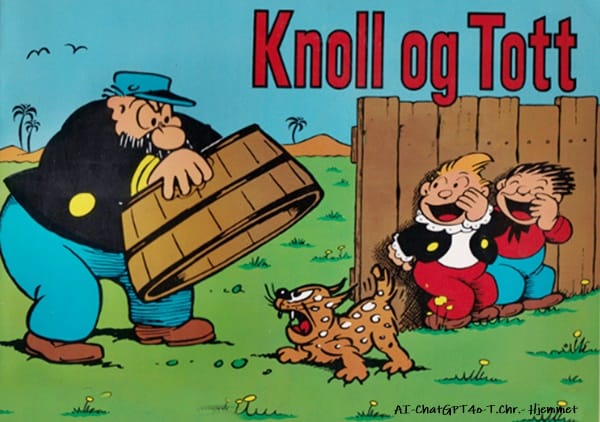MAX und MORITZ - KNOLL og TOTT

By AI-ChatGPT4o- .Chr. - Human Synthesis - 21 November 2024
Max und Moritz, a classic German cartoon and satirical storybook by Wilhelm Busch. First published in 1865, it tells the mischievous adventures of two naughty boys, Max and Moritz, who play a series of cruel pranks on the adults in their village.
The book is composed of seven "tricks" or stories, written in rhyming couplets, and illustrated by Busch's iconic line drawings. It is considered a pioneering work of visual storytelling and has influenced both comic strips and animation worldwide. The dark humor and the ultimate punishment of Max und Moritz (they are ground into grain and eaten by ducks!) make it a notable work of 19th-century German literature.
Knoll og Tott is the Norwegian name for The Katzenjammer Kids, which originated as a German-American comic strip by Rudolph Dirks in 1897. It became incredibly popular worldwide and is one of the oldest comic strips in history. The story revolves around two mischievous boys, Knoll and Tott (Hans und Fritz in the original), who constantly play pranks on adults, especially their mother and a strict captain figure.

The comic was widely adapted and localized, and in Norway, it gained significant cultural recognition as Knoll og Tott, often published in magazines and newspapers. Their humor and antics, while similar to Max und Moritz, are more slapstick and exaggerated, often involving nautical or adventurous settings, reflecting Dirks' German immigrant background and his adaptation to American humor.
It's fascinating how Knoll og Tott became such a global phenomenon and found its way into Norwegian culture. The localized name and context often make people think it's a purely Norwegian creation, but it’s all thanks to Rudolph Dirks and the unique charm of his storytelling.
